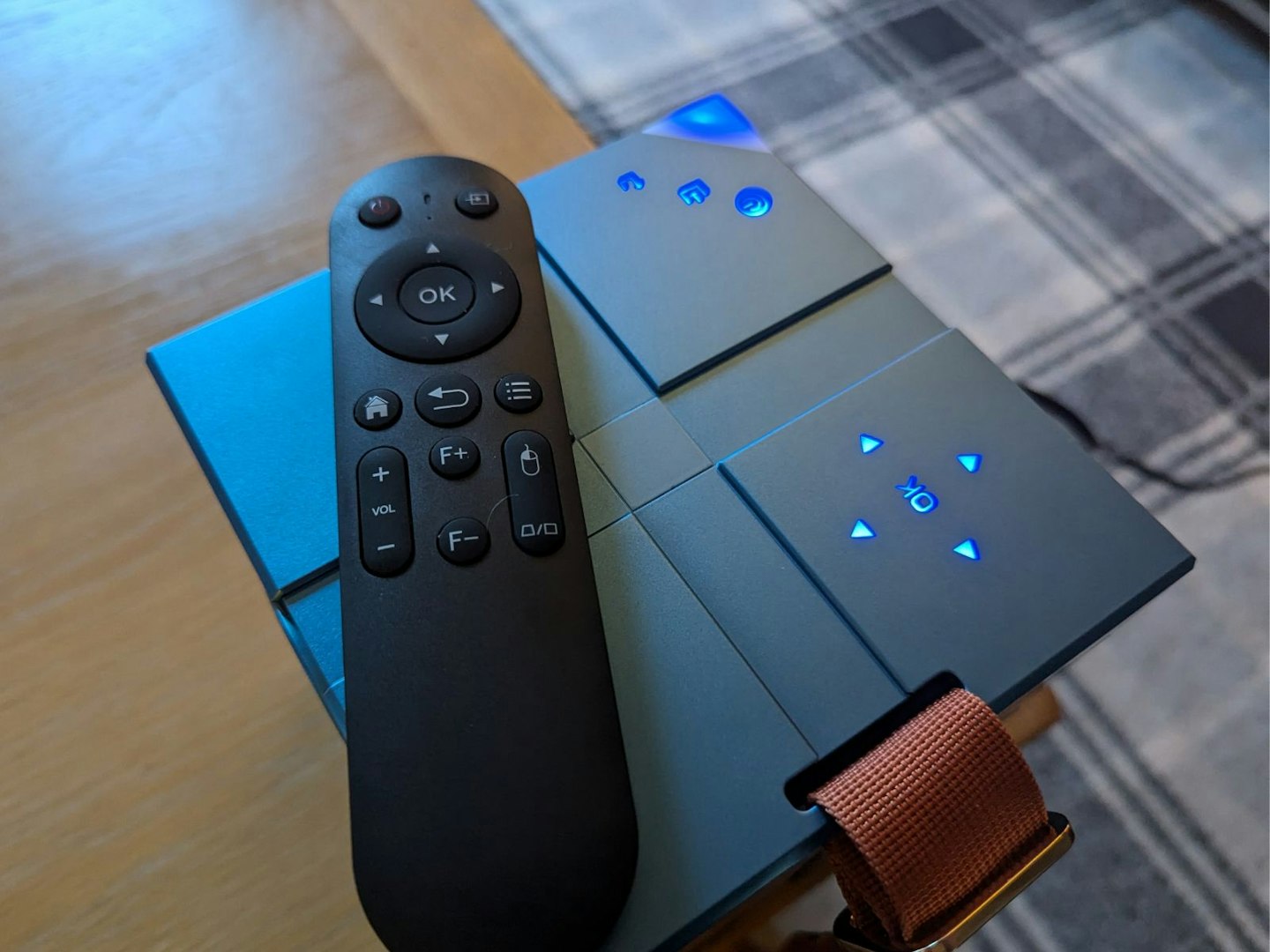With TVs being the go-to way to watch movies, there seems to be an unspoken rule that every living room or bedroom must have a designated space for a television. Once bulky, blocky machines, they've transformed into wafer-thin displays that, regardless, get bigger, year after year, taking up more and more space. And yet, in recent years, another way of watching has been on the rise. What was once confined to cinemas is now making its way into homes, and for good reason. Say goodbye to a tangled mess of wires in the corner of your room, and hello to a portable screen that goes wherever you want it to. From the comfort of your living room to the warmth of your bed, on holiday, or a camping trip. Take a projector anywhere and bring your favourite entertainment with you, all without having to worry about space.
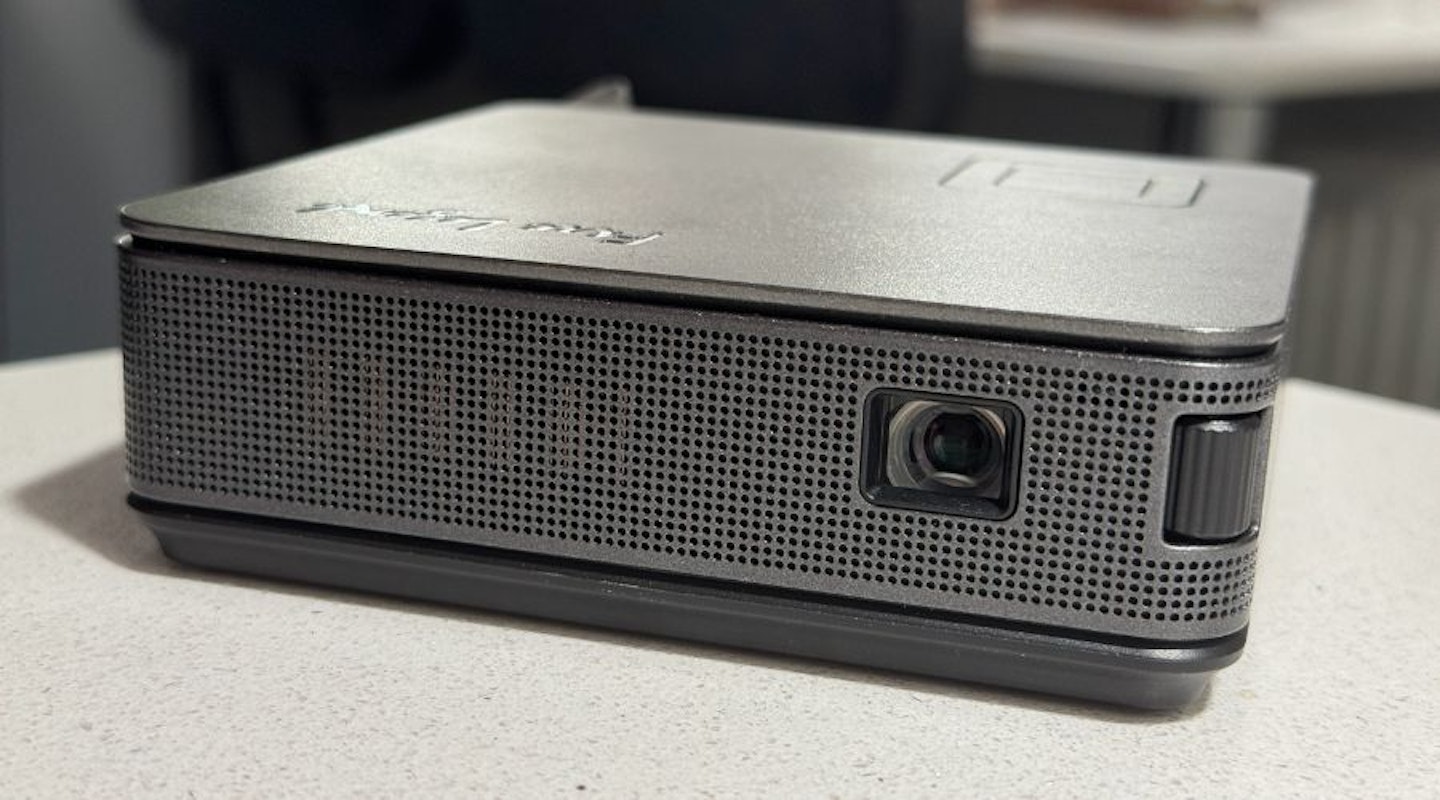
With AOPEN launching its portable PV12a LED projector, I put it to the test to see if this compact device lives up to expectations as the answer to on-the-go, space-saving entertainment. I dive into its design, build quality, interface, surface mapping, portability, picture quality, audio, and more. Most importantly, I'll let you know if its performance justifies its £200-ish price tag. Read on to find out more. I've also lined up some solid alternatives in and around its price range if you want to go a different route.
store.acer.com
Pros
- Lightweight and palm-sized, it slips into luggage without a second thought
- A five-hour battery lets you binge three films or five episodes
- Wireless and SmartOS modes make for easy screen mirroring and streaming
Cons
- The 2W speaker lacks depth, leaving audio feeling flat
| Resolution | 480p (854 x 480) |
| Brightness | 800 LED Lumens, 220 ANSI lumens |
| Audio | 2W |
| Connectivity | HDMI x1, USB A x1, Bluetooth, Wi-Fi |
| Smart features | SmartOS, Aptoide TV, EZcast wireless mirroring |
| Power | Mains via adapter, battery life up to 5 hours |
| Dimensions | 115 x 115 x 36.3 mm |
| Weight | 0.46kg |
What's in the box?
As someone who's used to watching films and series on an OLED Full HD with Dolby Atmos audio, I was hesitant, though no less eager, to try out this budget projector. While my expectations were shaped by the home theatre projectors I've used in the past, I had to adjust them, considering this is a budget option designed for student cribs and camping trips. At around £300, with a modest (understandably so, given the price and compact design) 480p resolution, I was curious to see how it would hold up. Could I tolerate the low resolution and 2W speaker? I left my OLED standards at the door and gave this portable unit a fair shot.
Neatly packed, the projector itself is about the size of a palm. It comes with an AC-to-DC power adapter – charging isn't particularly fast, but it gets the job done. There's also a start-up guide and a Wireless Projection Kit (UWA5), breaking down the setup and phone connectivity in simpler terms. Admittedly, it was a bit of a faff at first, but the interface was easy to navigate once I got the hang of it.
An IR remote control is also included for convenience (more on that later). The button interface on the device itself is much too fiddly for larger hands. Then, there's a snug carrying case for transport – ideal for throwing the projector into a backpack for camping trips or storing it safely in a box or drawer. Lastly, an HDMI cable is provided for laptops and other wired connections, though its wireless Wi-Fi connections are great for home viewing.
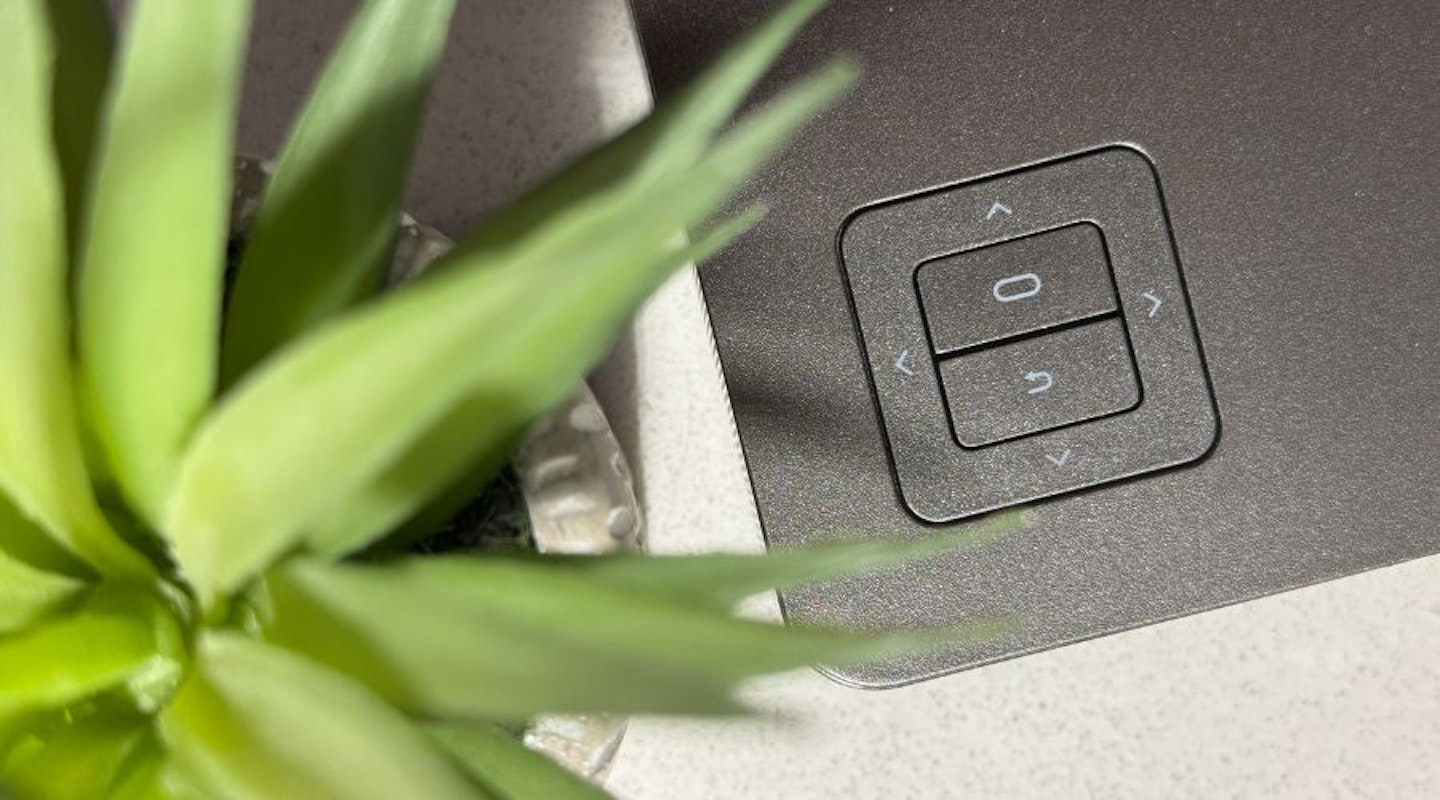
Resolution and brightness
With only a quarter HD (480p) resolution and 220 ANSI lumens brightness, the specs might seem underwhelming. But considering its compact, portable and camping focus, the trade-offs make sense. That said, when I tested it with the first episode of Severance season 2, I was surprised by how okay it actually was. Granted, the lower resolution was noticeable, but it was by no means a dealbreaker.
As for brightness, with most projectors averaging around 1000 ANSI lumens, this one, a mere 220, is strictly a night-time device. Thankfully, that wasn't an issue, as I typically watch films and shows in the evening. Given that it's primarily designed for late-night viewing in a tent or on a small projector screen, the lower brightness is an understandable trade-off. And having tested it at night, I was pleasantly surprised. Not game-changing, but more than adequate.
However, should you be after a budget-friendly projector for daytime use, you'll need to look elsewhere and should expect to stretch your budget quite a bit further for the additional brightness rating.
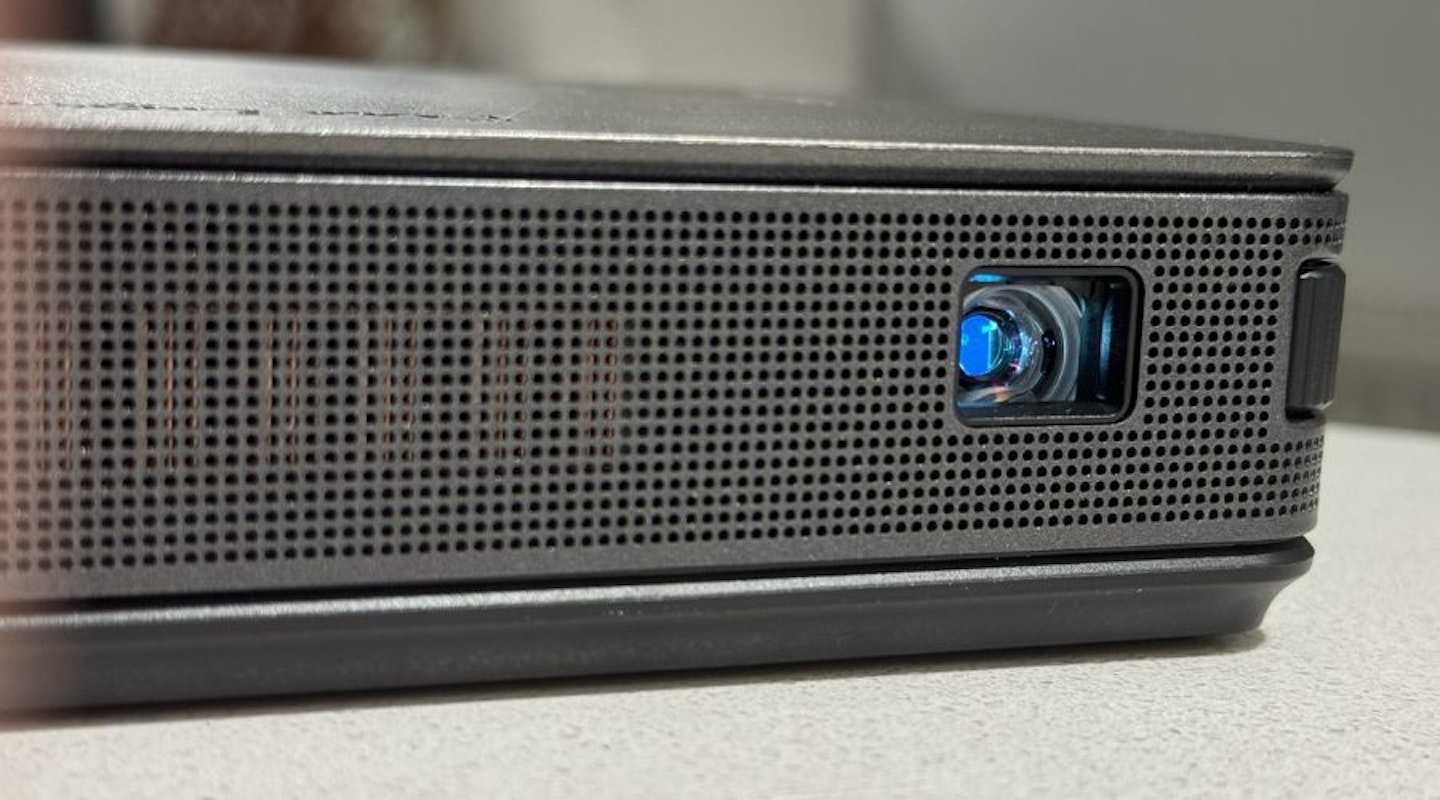
Design and build
As mentioned, the first thing that stands out is the size. This might be the smallest projector I've come across. At just 150 by 150 millimetres and 440 grams, it's compact enough to toss in a bag or rucksack without a second thought.
Build quality holds up well, too. It feels sturdy enough to handle the usual bumps and bashes of backpack travel. That said, it doesn't have a premium feel like some of the other projectors we've tested. It's humble, functional, but not here to impress with the flashy aesthetics offered by the likes of XGIMI's projector range.
The design is refreshingly simple and setup is intuitive. It has a compact body that easily fits in the slimmer side compartments of a backpack. The top side features a minimalist button interface: functional, though a bit fiddly for larger hands.
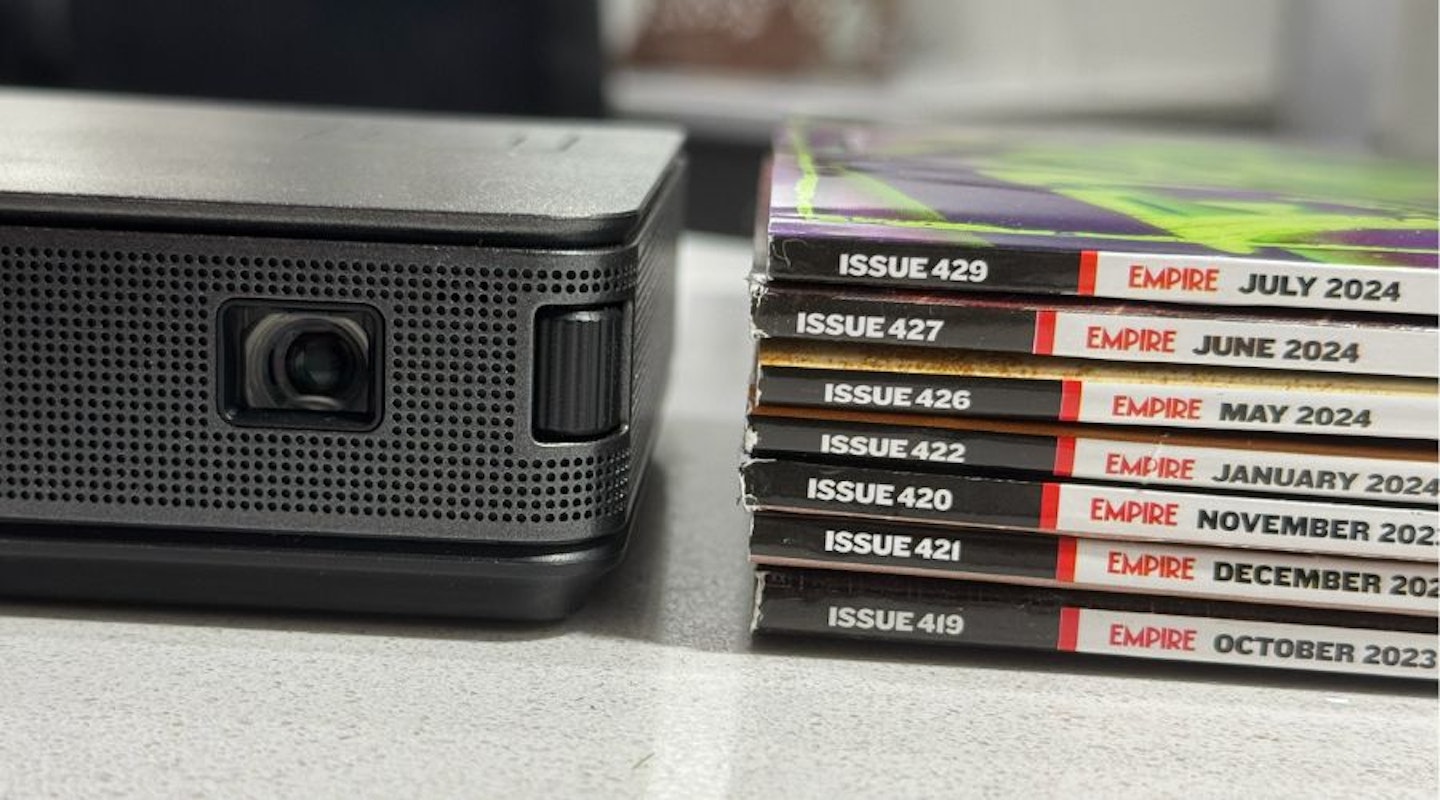
Ports
Navigation is handled by up, down, left, and right arrows, along with select and exit buttons. While it's nice to have onboard controls, I'd strongly encourage using the included remote or AOPEN's dedicated mobile app for a smoother experience.
Sadly, there's no auto-focus, but Acer keeps it simple. You'll find a manual focus toggle on the front next to the long-lasting DLP LED lamp (up to 30,000 hours) and a 5.02mm f/1.6 lens. Once positioned, you can adjust it to sharpen the image.
The right side features a power button alongside an additional strap – though what you'd realistically attach it to remains a mystery to me. Still, it's there should you need it!
The back includes a range of ports:
• DC Out (5V/1A, USB Type-A) x1
• USB Input (Type-A) x1
• HDMI (Video, Audio, HDCP) x1
• Share Output Port x1
• Headphone Out (Stereo Mini Jack) x1
• Wi-Fi dongle Input x 1 (once inserted, it's not removable)
On the underside, there's a tripod mount. Alternatively, flip open the bottom to adjust the built-in stand, letting you angle the projector toward your wall, ceiling, or tent.
Beyond the on-device controls and dedicated app, the included remote is by far the easiest and most intuitive option. Its simple interface allows for easy navigation and full projector operation. And while the build is fairly basic, the buttons are responsive and easy to understand.
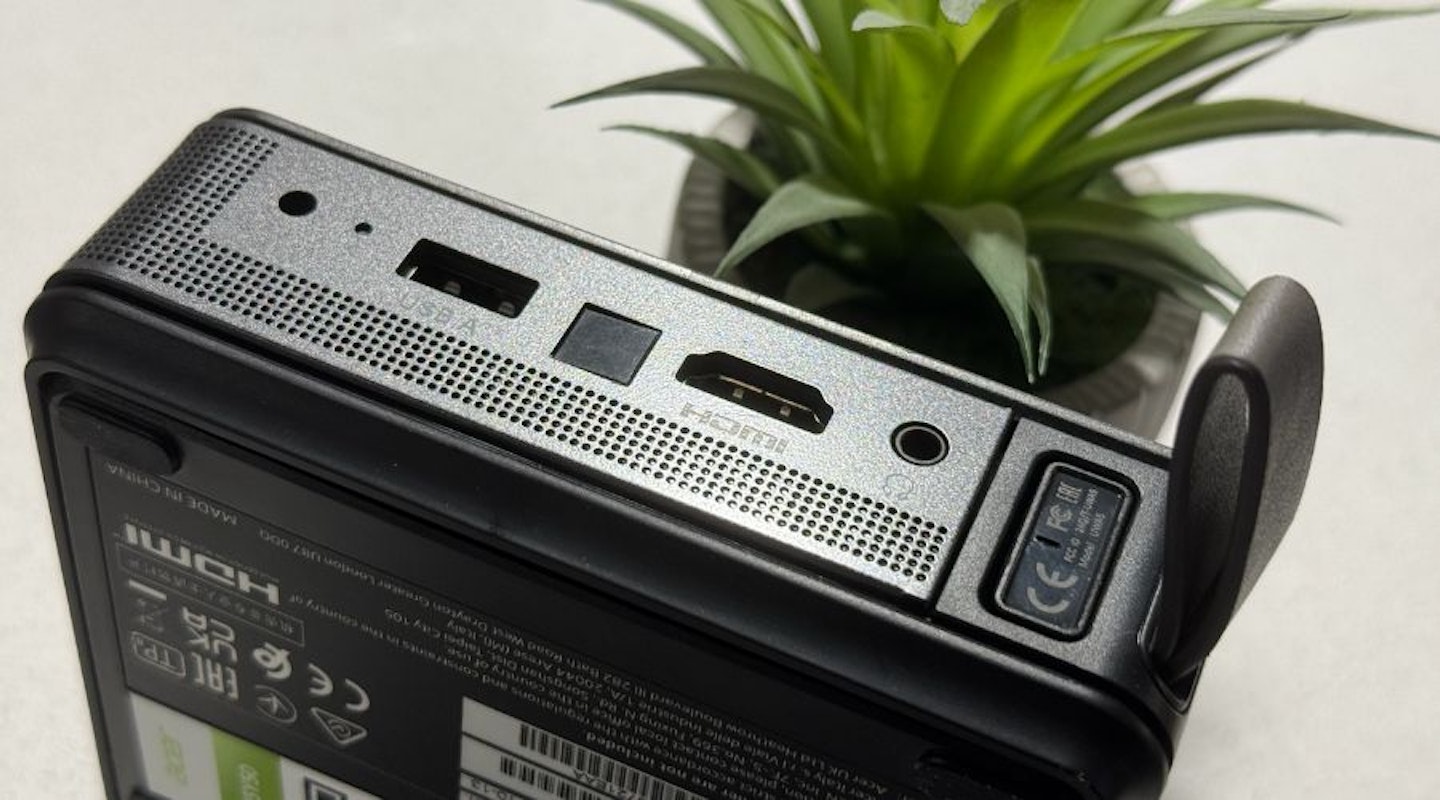
Apps & streaming
Powering on the device (via the slight button on its right side) brings up a clean, easy-to-navigate interface. It supports Apple AirPlay for seamless casting from iPhones and Macs and screen mirroring via the "Wireless Display" feature (green icon).
For those who prefer built-in apps, the Aptoide TV service (orange icon) lets you download and sign into your favourite streaming platforms. You can create up to eight app shortcuts (blue plus icons) for a more personalised home screen. Media playback is also available via HDMI or USB if needed.
Wireless Mirroring
For most users, wireless mirroring will be the go-to. Once the PV12a is connected to the same Wi-Fi network as your device (I recommend using the remote for typing, as, again, the on-device buttons aren't ideal), it will appear on your projector screen for connection via EZcast. With low latency and support for up to 5 GHz Wi-Fi, the connection is generally smooth and stable.
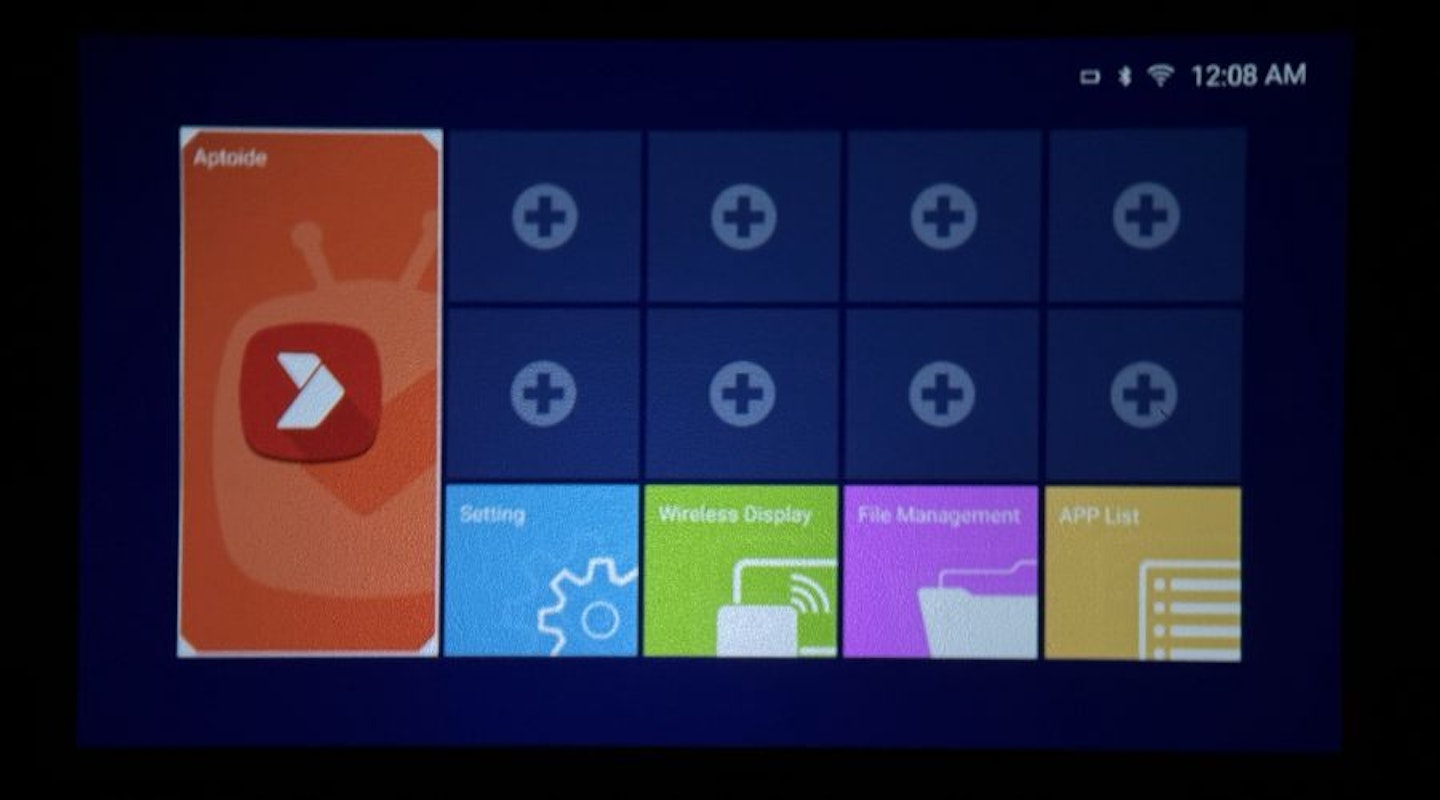
Performance
As mentioned above, I tested this by watching the first episode of Severance Season 2 on Apple TV. While 480p is by no means my preferred way to experience it, the quality is more than adequate for a camping trip or entertaining kids. I also streamed some YouTube content – film essays and trailers (including The Brutalist) – and while the resolution wasn't there, it was by no means unwatchable. Yes, it's fuzzy, but given the projector's specs, it reaches a just-about reasonable clarity. As for image range, I recommend positioning the projector between 29 and 70 inches away from the desired surface (100 inches at a push).
Angling it toward the ceiling while in bed makes for a far more comfortable experience than hunching over a phone or tablet or craning your neck toward a bedroom TV. Auto-mapping (ceiling projection) and portrait mode (optimised for a smartphone's 9:16 ratio) are a godsend in these situations. I was pleasantly surprised by how responsive it was when I angled it toward a different surface.
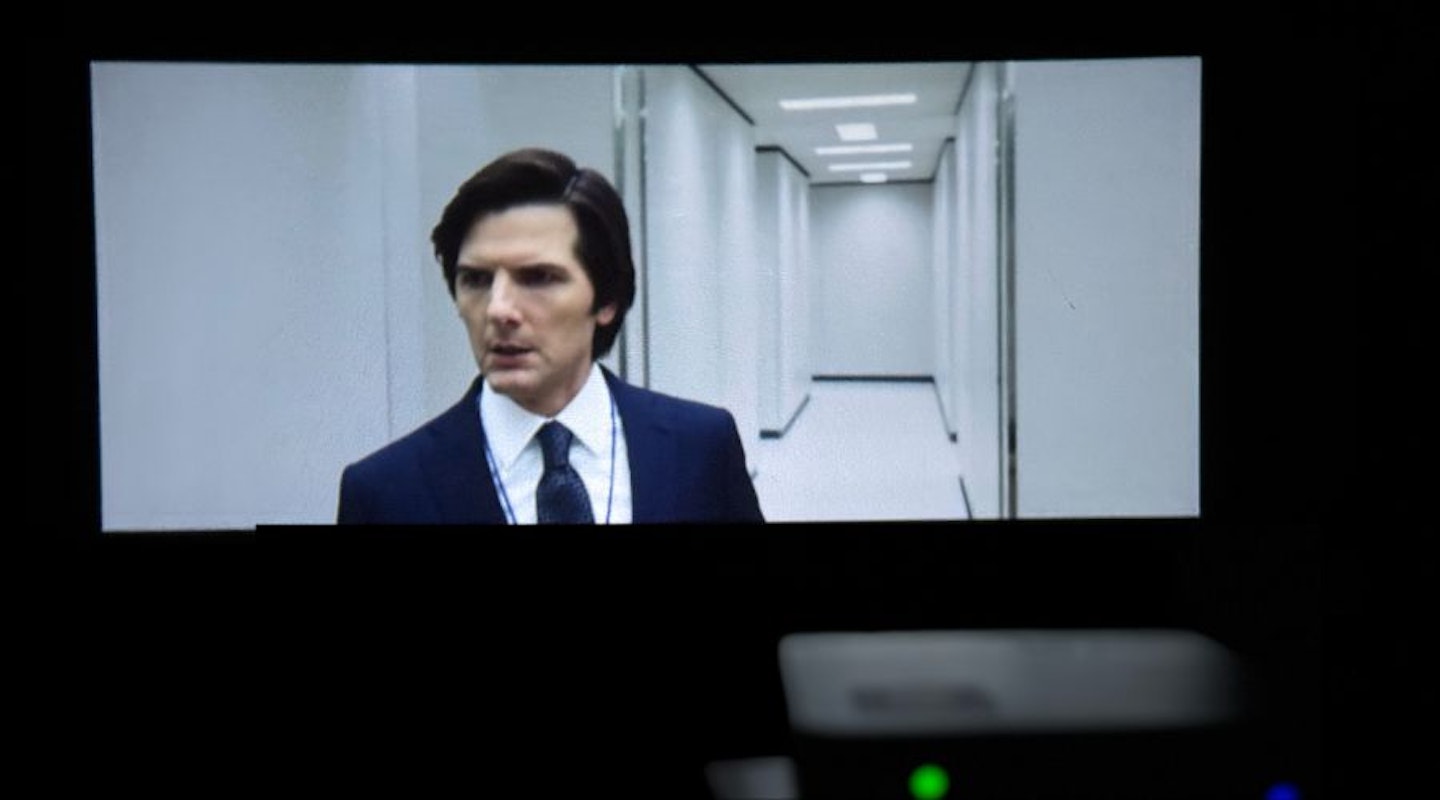
Audio
Unfortunately, there is a downside. I get that we're on the cheaper end of projectors, but I was still disappointed by the small 2W built-in speaker. It's fine for a tent, but not for a proper movie experience. Worse yet, the internal fan, loud when it needs to be, muffles the already weak (and, when pushed, harsh) sound output. The speaker gets loud, but the tinny sound and poor dialogue are like turning up the volume on a cheap radio – more volume, less quality.
There is a solution, however. On the back of the device, you'll find a headphone jack. If you're camping with someone, grab a cheap headphone splitter, and you can both listen together. Or, if you'd rather keep the sound to yourself, plug in a pair of headphones to avoid disturbing others
.
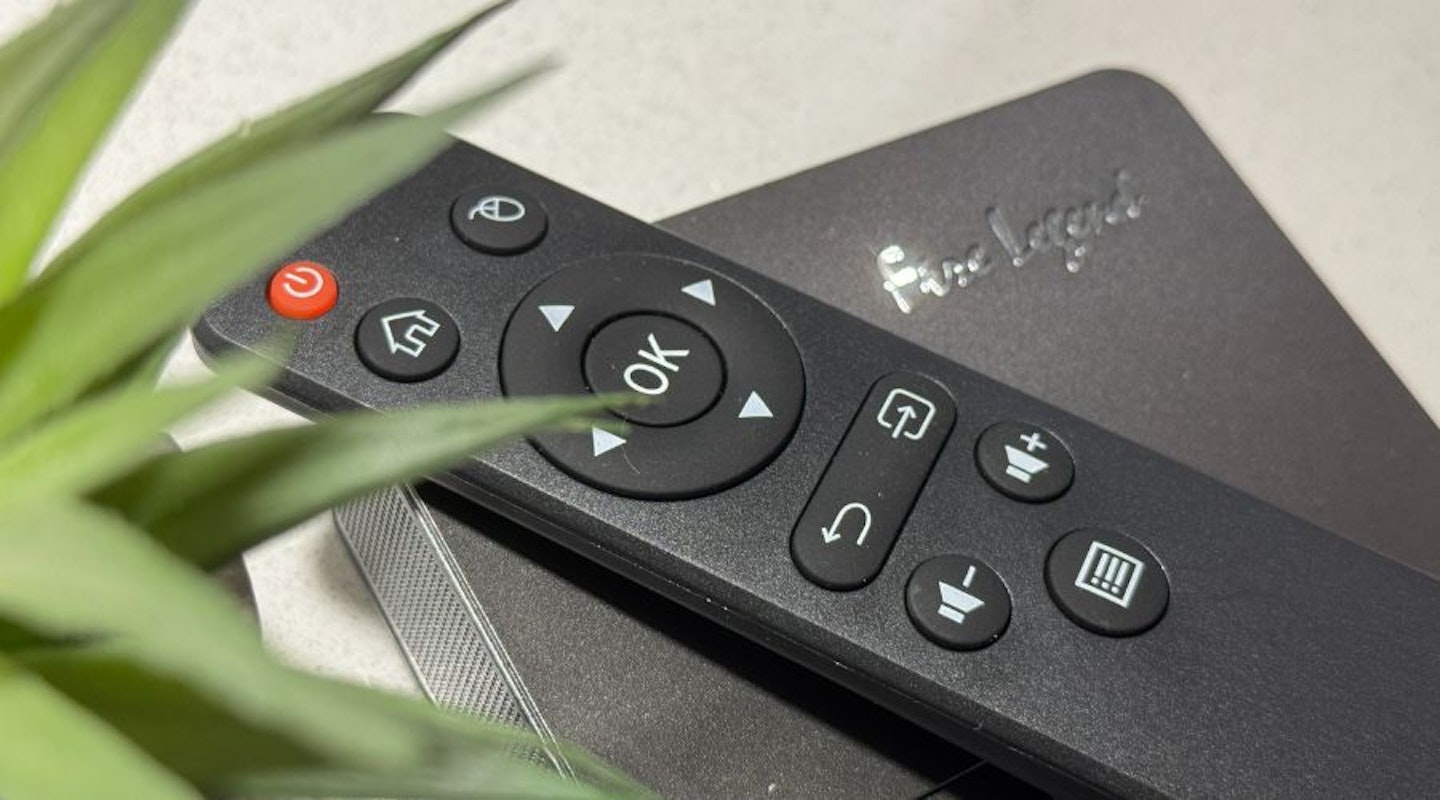
Battery life
AOPEN promises up to five hours of use with its 9,000mAh internal battery (enough for two to three feature-length films or four to five episodes of TV). In my experience, it lasted around four and a half hours with standard use and the headphone jack connected. However, when I cranked up the 2W speaker volume, it dropped to about two hours and fifty minutes. While this drop isn't unusual, I was pleasantly surprised it came close to the claimed battery life. I watched a few episodes of The White Lotus, making it through about a quarter of the third episode before it packed up – so pretty reasonable for such a compact device.
AOPEN also doubles as a power bank for smartphones and tablets, which is a lifesaver on camping trips, though it does, of course, impact the battery's longevity. So, for those using it at home or near an AC power source, I'd recommend keeping it plugged in.
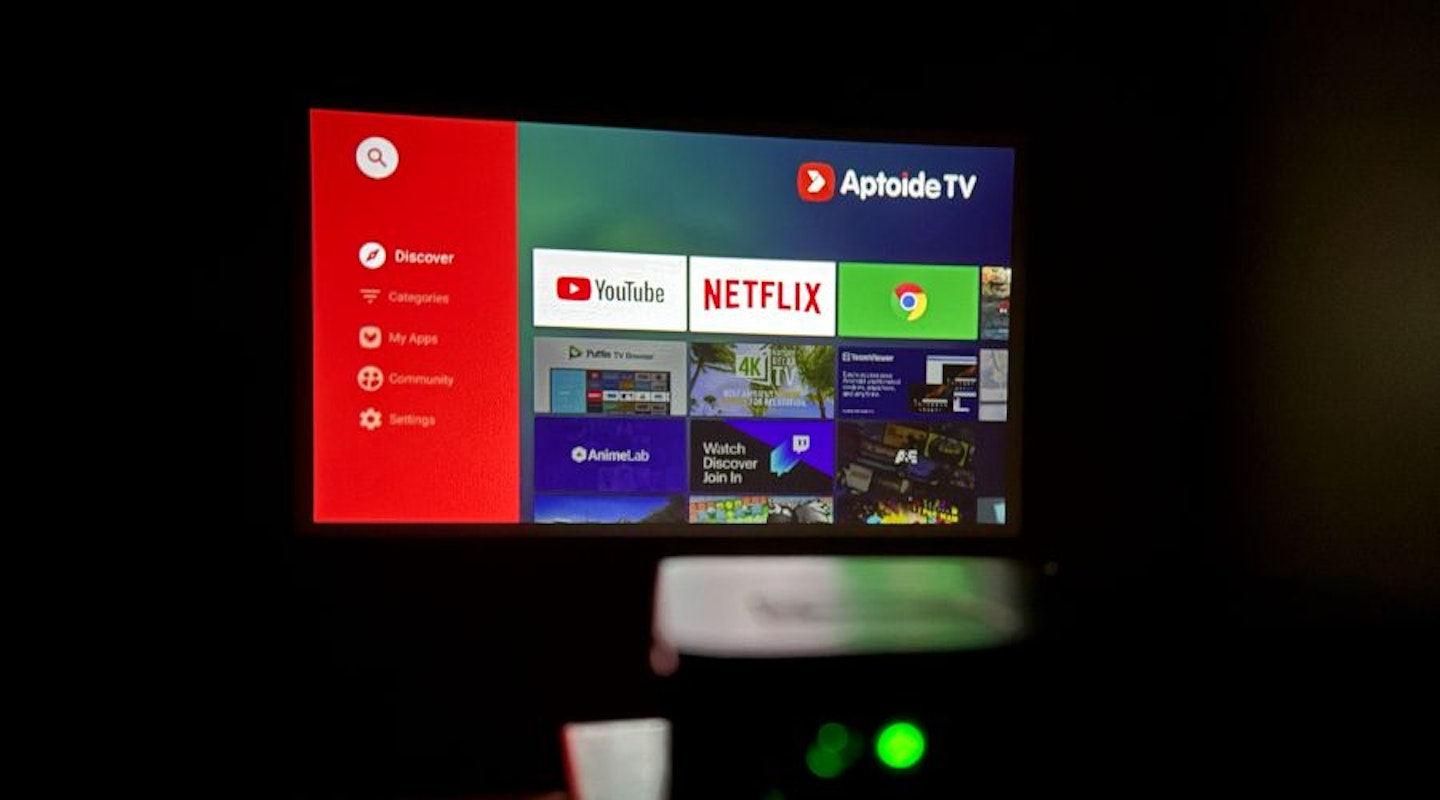
Price and competition
Currently priced around £350, the PV12a sits on the lower end of the projector price spectrum and above the AOPEN QH12a which we've also tested and which offers slightly higher specs (but falls short on the PV12a's sleek, portable design). If you're looking for a projector that can easily slide into a backpack or laptop bag, the PV12a is pretty tough to beat. For that reason, its price is justified. As for picture and sound quality, it's fairly standard, but considering that higher-end models, like the Nebula Capsule 3 Laser Projector, come in at around the £700 mark, the value here for under £400 is there for sure.
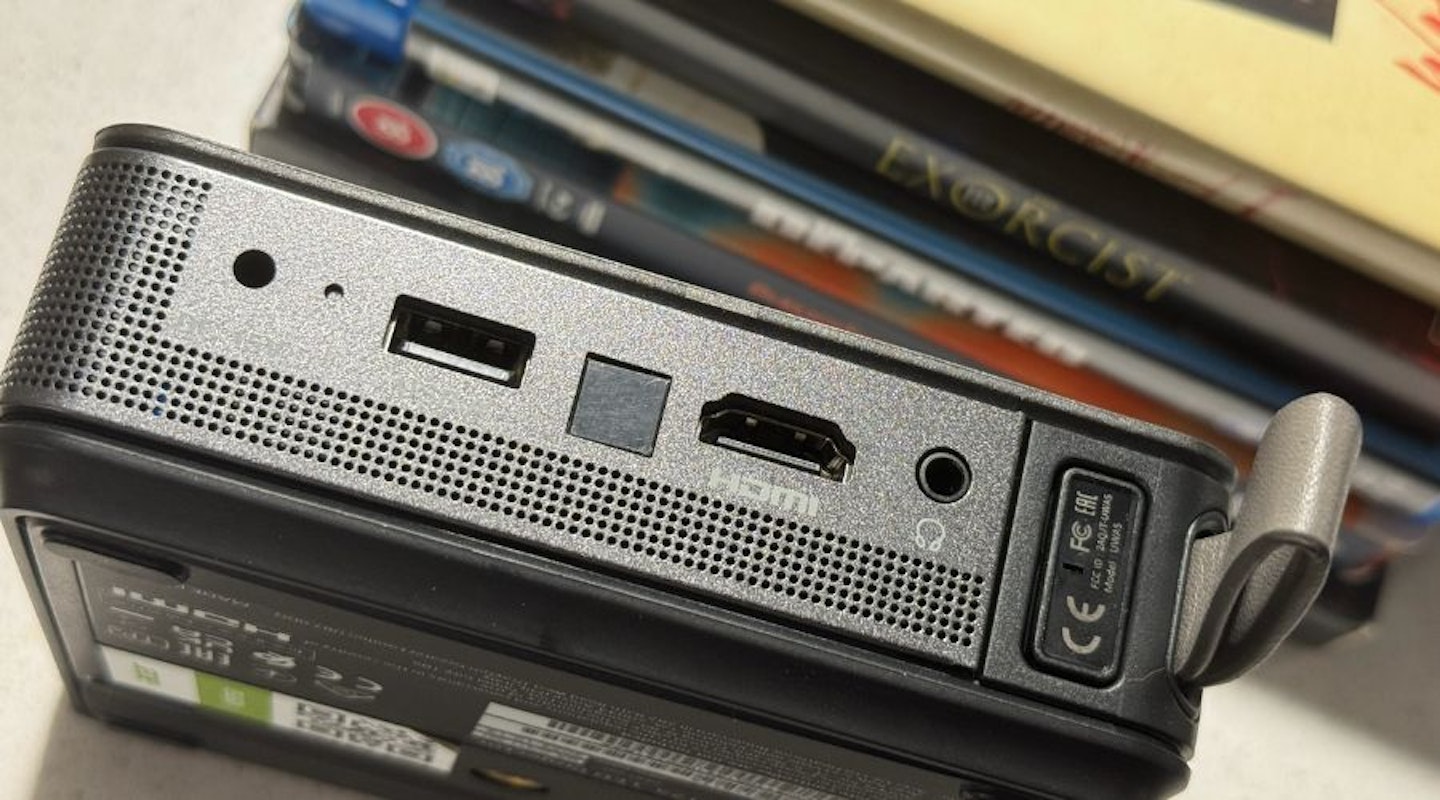
Who is it for?
While AOPEN's PV12a isn't the brightest, sharpest, or richest in sound, it's a solid choice for anyone wanting entertainment on the go – whether for a bigger screen or a casual movie night. It will be especially appealing to students, campers, backpackers, and those with limited space who can't accommodate the bulk of a TV. Parents might also appreciate it as an easy way to give kids that big-screen thrill without the eye strain of a tiny smartphone.
Cinephiles will find its resolution and audio lacking, and it's no replacement for a dedicated home projector. But for casual, on-the-go entertainment, it is one of the most portable options available. At such an accessible price point, it's also good value for money. Above all, its standout feature is its portability. There aren't many projectors this compact, lightweight, and easy to toss into a bag. So, for the campers and backpackers among our readers, this one is best suited for you.
Alternatives to the AOPEN PV12a projector
Anker Nebula Capsule Air Projector
Pros
- One of the most capable, compact and truly portable projectors on the market
- A variety of apps and can cast from phones and tablets
- Built-in speakers provide well-balanced audio
Cons
- Only 720p and limited brightness – portable, not a high-spec home cinema device
| Resolution | 720p |
| Brightness | 150 ANSI lumens |
| Audio | 5W, Dolby Audio |
| Connectivity | HDMI x1, USB C x1, Bluetooth, Wi-Fi |
| Smart features | Google TV operating system, Google Assistant |
| Power | Mains via adapter, battery life up to 2 hours |
| Dimensions | 6.8 x 6.8 x 14 cm |
| Weight | 1.37 kg |
store.acer.com
Pros
- Great picture quality and focus
- Easy to navigate interface
- Ample connectivity options
Cons
- Fans can get quite noisy
| Resolution | 1280 x 720 |
| Brightness | 135 lm ANSI (Standard), 5500 lm (LED) |
| Audio | 3W speakers x 2 |
| Connectivity | HDMI, USB, AV, Bluetooth |
| Smart features | Smart OS |
| Power | AC Power Cord |
| Dimensions | 14 x 15.3 x 14.4 cm |
| Weight | 0.95 kg |
How the product was tested
I spent several weeks testing the product, primarily using the projector in my living room, bedroom and office. I watched various content, including YouTube wirelessly mirrored from my smartphone, as well as Severance on Apple TV and The White Lotus on HBO. These helped me assess dialogue reproduction, along with the depth and quality of audio in music-heavy sequences. Certain action sequences from Matt Reeves' The Batman also helped determine this. I also briefly used the device as a wireless speaker for music, podcasts, and audiobooks. While the speakers performed decently, I preferred using headphones.
Who tested it?
Harvey Isitt is a tech writer and reviewer for various brands, including What's The Best. Specialising in sound and home cinema systems, he has a home theatre setup, an extensive movie collection, and a deep love for films and TV shows, reflected in his Instagram (500K+). With extensive experience reviewing soundbars and home speaker systems, he's well-suited to testing the AOPEN PV12a projector.
Harvey Isitt is a Tech Writer and Reviewer. He creates reviews and how-to guides on a broad range of topics and has written extensively for What's The Best.
Besides writing, Harvey is an avid camera, turntable, and speaker enthusiast with a somewhat unhealthy obsession with movies. He is also a keen runner, cyclist, hiker, and swimmer.












